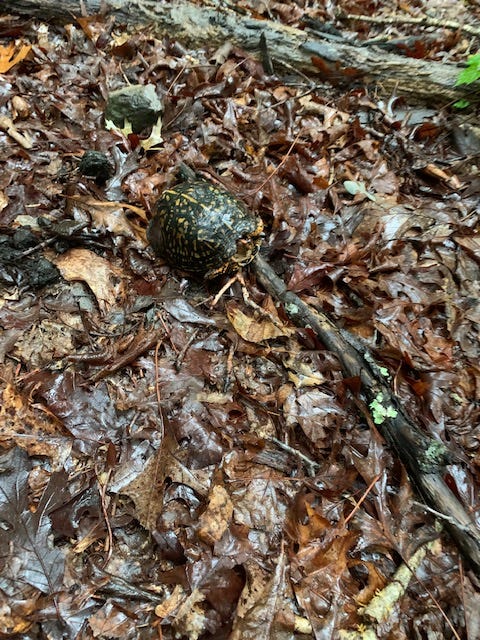
This week the United Nations released its newest climate report, which confirmed what we already knew: climate change, which is caused by man, is “rapid, widespread, and intensifying.” The report also delivers hopeful but very serious news: we still have a (very small) window to make changes that will prevent the worst. Greta Thunberg called the 3,000-page report “solid (but cautious)” and repetitive of thousands of other reports (as in—just do something about it already). She also tweeted:

So, how do we treat the crisis—which we see in the burning wildfires in Greece, the deadly floods in India, the droughts and wildfires in the Western U.S.—like a crisis, if we are not in one of those crisis-stricken places? How do you help children (and maybe yourself) understand what is at stake?
A tool that Bea and I found useful, that the New York Times published in 2018, is this “How much hotter is your hometown” interactive feature. You simply plug in your hometown, find the year you were born, and the site shows you:
-how many days above ninety in the year you were born;
-how many days above ninety in your hometown currently (well, actually in 2017); and
-how much hotter it will get by the time you are eighty years old
I like this tool because, as scary as it is, it is also fairly easy to understand. It starts with your birth year, your home. The past, to us anyway, feels a lot more concrete than the future. There are probably photos of you in this place in the past, perhaps sledding in deep snow that doesn’t fall anymore, or standing on a solidly frozen lake that only gets a thin ice coating these days.
We also all know what ninety degree days feel like: hot and sticky and uncomfortable, even deadly for many people and animals. They are especially dangerous for older people or people with health problems, for people without air conditioning, and for people who work outdoors. They make wildfires more likely, they contribute to dangerous storms and hurricanes, and they make food harder to grow. As Bea noted, they also cause problems for animals, who get driven out of their natural habitats by climate change. “And that just causes problems everywhere.”
Bea and I started with my hometown of Walkerton, Virginia. In 1976 (the year I was born), it was over ninety degrees Fahrenheit there thirty days of the year. Today there are forty-one ninety-plus days. By the time I’m eighty years old, there could be sixty-six of these sweltering days.
We tried a few celebrities we are fans of: Barack Obama’s birthplace, Honolulu, moves from zero 90-degree days to one between 1960 and 2017. And Michelle Obama’s hometown, Chicago, dips a little between 1964 and 2017—from ten days to eight, before doubling to twenty days by the time Michelle is eighty. Taylor Swift’s birthplace of West Reading, PA, had fifteen days above ninety in 1989, more than twenty days now, and likely forty days by the time T. Swift is eighty.
The interactive tool doesn’t plot 2013, the year Bea was born, so we tried 2010, the closest year. In her hometown of Pittsboro, North Carolina, there were forty-nine above-ninety days that year. In 2017 there were fifty-four. By the time Bea reaches the end of the century, there could be eighty-three days above 90 degrees. That’s almost a quarter of the year.
The climate report tells us we can’t undo some of this. Things are not going back to how they were in 1964 or 1976 or 1989. But we can keep things from getting much, much worse. And by “we” of course I mean our governments, and the fossil fuel industry.
Our job is to learn as much as we can, tell people about what we know, and put pressure on these powerful people.
Here are some ways to do that:
NASA’s Climate Kids has a lot of good explanatory resources about climate change.
The Climate Museum also has some great resources, including the video “Beyond Lies” exhibit about the tactics the fossil fuel industry has taken to slow action on climate change. They also have a great tutorial for calling your representative. And, there is also a great resource on their site called Climate Art for Congress, which invites kids (and groups of kids—like an art/K-12 classroom) to send letters and drawings to their representatives.
And, because it’s Friday and we’re into moths, here is a cool video posted to the Ant Lab Youtube channel by Adrian Smith, head of the evolutionary biology and behavior lab at the N.C. Museum of Natural Sciences:
Have you tried the How Much Hotter is Your Hometown tool? What did you find out? Are there other resources you recommend?



